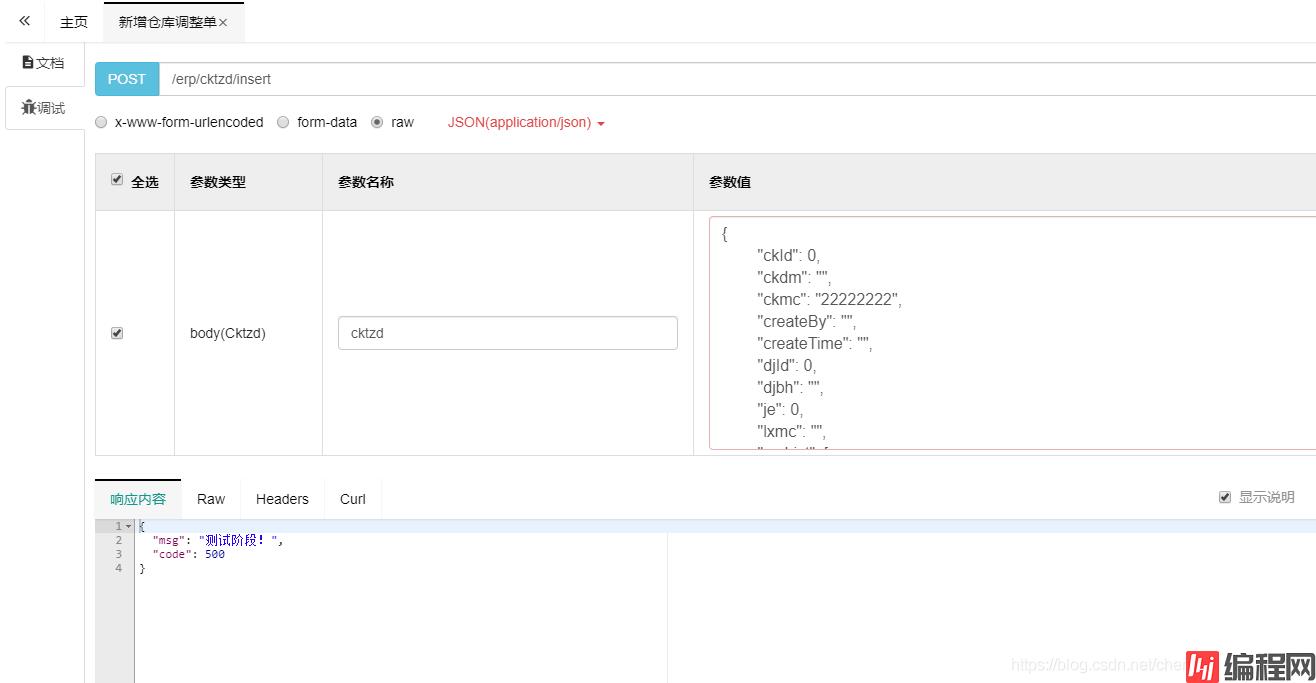Python 官方文档:入门教程 => 点击学习
目录步骤一、写限制注解步骤二、解析注解步骤三、控制层注解使用当前端按连续请求多次,请求过于频繁或者是多次重复提交数据,对系统或者是数据造成了一点的损害。 为了解决这个问题,下面介绍了
当前端按连续请求多次,请求过于频繁或者是多次重复提交数据,对系统或者是数据造成了一点的损害。
为了解决这个问题,下面介绍了一种简易的解决方法:
import java.lang.annotation.ElementType;
import java.lang.annotation.Retention;
import java.lang.annotation.RetentionPolicy;
import java.lang.annotation.Target;
@Target(ElementType.METHOD) // 作用到方法上
@Retention(RetentionPolicy.RUNTIME) // 运行时有效
public @interface NoRepeatSubmit {
String name() default "name:";
}import javax.servlet.Http.httpservletRequest;
import com.hieasy.comm.core.domain.R;
import com.hieasy.comm.Redis.service.RedisService;
import com.hieasy.system.util.TermUtil;
import org.apache.commons.logging.Log;
import org.apache.commons.logging.LogFactory;
import org.aspectj.lang.ProceedingJoinPoint;
import org.aspectj.lang.annotation.Around;
import org.aspectj.lang.annotation.Aspect;
import org.springframework.beans.factory.annotation.Autowired;
import org.springframework.stereotype.Component;
import org.springframework.WEB.context.request.RequestContextHolder;
import org.springframework.web.context.request.ServletRequestAttributes;
import java.util.concurrent.TimeUnit;
@Aspect
@Component
public class NoRepeatSubmitaop {
private Log logger = LogFactory.getLog(getClass());
@Autowired
private RedisService redisService;
@Around("execution(* com.hieasy.*.controller.*.*Ctrl.*(..)) && @annotation(nrs)")
public Object arround(ProceedingJoinPoint pjp, NoRepeatSubmit nrs) throws Throwable {
ServletRequestAttributes attributes = (ServletRequestAttributes) RequestContextHolder.getRequestAttributes();
HttpServletRequest request = attributes.getRequest();
String key = TermUtil.getUserId() + "-" + request.getServletPath();
if ( !redisService.haskey(key) ) {// 如果缓存中有这个url视为重复提交
Object o = pjp.proceed();
redisService.setCacheObject(key, 0, 15, TimeUnit.SECONDS);
return o;
} else {
redisService.setCacheObject(key, 0, 15, TimeUnit.SECONDS);//点了同样的URL继续限制,直到2次点击中间间隔超过了限制
return R.error("请勿重复提交或者操作过于频繁!");
}
}
}import org.springframework.beans.factory.annotation.Autowired;
import org.springframework.data.redis.core.*;
import org.springframework.stereotype.Component;
import java.util.*;
import java.util.concurrent.TimeUnit;
@Component
@SuppressWarnings(value = {"unchecked", "rawtypes"})
public class RedisService {
@Autowired
public RedisTemplate redisTemplate;
public <T> ValueOperations<String, T> setCacheObject(String key, T value) {
ValueOperations<String, T> operation = redisTemplate.opsForValue();
operation.set(key, value);
return operation;
}
public <T> ValueOperations<String, T> setCacheObject(String key, T value, Integer timeout, TimeUnit timeUnit) {
ValueOperations<String, T> operation = redisTemplate.opsForValue();
operation.set(key, value, timeout, timeUnit);
return operation;
}
public <T> T getCacheObject(String key) {
ValueOperations<String, T> operation = redisTemplate.opsForValue();
return operation.get(key);
}
public void deleteObject(String key) {
redisTemplate.delete(key);
}
public void deleteObject(Collection collection) {
redisTemplate.delete(collection);
}
public <T> ListOperations<String, T> setCacheList(String key, List<T> dataList) {
ListOperations listOperation = redisTemplate.opsForList();
if (null != dataList) {
int size = dataList.size();
for (int i = 0; i < size; i++) {
listOperation.leftPush(key, dataList.get(i));
}
}
return listOperation;
}
public <T> List<T> getCacheList(String key) {
List<T> dataList = new ArrayList<T>();
ListOperations<String, T> listOperation = redisTemplate.opsForList();
Long size = listOperation.size(key);
for (int i = 0; i < size; i++) {
dataList.add(listOperation.index(key, i));
}
return dataList;
}
public <T> BoundSetOperations<String, T> setCacheSet(String key, Set<T> dataSet) {
BoundSetOperations<String, T> setOperation = redisTemplate.boundSetOps(key);
Iterator<T> it = dataSet.iterator();
while (it.hasNext()) {
setOperation.add(it.next());
}
return setOperation;
}
public <T> Set<T> getCacheSet(String key) {
Set<T> dataSet = new HashSet<T>();
BoundSetOperations<String, T> operation = redisTemplate.boundSetOps(key);
dataSet = operation.members();
return dataSet;
}
public <T> HashOperations<String, String, T> setCacheMap(String key, Map<String, T> dataMap) {
HashOperations hashOperations = redisTemplate.opsForHash();
if (null != dataMap) {
for (Map.Entry<String, T> entry : dataMap.entrySet()) {
hashOperations.put(key, entry.geTKEy(), entry.getValue());
}
}
return hashOperations;
}
public <T> Map<String, T> getCacheMap(String key) {
Map<String, T> map = redisTemplate.opsForHash().entries(key);
return map;
}
public Collection<String> keys(String pattern) {
return redisTemplate.keys(pattern);
}
public boolean haskey(String key){
return redisTemplate.hasKey(key);
}
public Long getExpire(String key){
return redisTemplate.getExpire(key);
}
public <T> ValueOperations<String, T> setBillObject(String key, List<Map<String, Object>> value) {
ValueOperations<String, T> operation = redisTemplate.opsForValue();
operation.set(key, (T) value);
return operation;
}
public <T> ValueOperations<String, T> setBillObject(String key, List<Map<String, Object>> value, Integer timeout, TimeUnit timeUnit) {
ValueOperations<String, T> operation = redisTemplate.opsForValue();
operation.set(key,(T)value, timeout, timeUnit);
return operation;
}
public <T> HashOperations<String, String, T> setCKdBillMap(String key, Map<String, T> dataMap) {
HashOperations hashOperations = redisTemplate.opsForHash();
if (null != dataMap) {
for (Map.Entry<String, T> entry : dataMap.entrySet()) {
hashOperations.put(key, entry.getKey(), entry.getValue());
}
}
return hashOperations;
}
} @NoRepeatSubmit
@PostMapping("insert")
@OperLog(title = "仓库调整", businessType = BusinessType.INSERT)
@apiOperation(value = "新增仓库调整单", notes = "")
public R insert(@RequestBody Cktzd cktzd) {
System.out.println(JSON.tojsONString(cktzd));
return R.error("测试阶段!");
}测试结果:
第一次提交

在不间隔15就继续点

不间断的点,只要2次点击之间没有超过15秒,都会抛出请勿重复请求。直到2次点击之间间隔足够才能正常请求!
到此这篇关于Java后端限制频繁请求和重复提交的实现的文章就介绍到这了,更多相关Java后端限制频繁请求内容请搜索编程网以前的文章或继续浏览下面的相关文章希望大家以后多多支持编程网!
--结束END--
本文标题: Java后端限制频繁请求和重复提交的实现
本文链接: https://www.lsjlt.com/news/145648.html(转载时请注明来源链接)
有问题或投稿请发送至: 邮箱/279061341@qq.com QQ/279061341
下载Word文档到电脑,方便收藏和打印~
2024-03-01
2024-03-01
2024-03-01
2024-02-29
2024-02-29
2024-02-29
2024-02-29
2024-02-29
2024-02-29
2024-02-29
回答
回答
回答
回答
回答
回答
回答
回答
回答
回答
一口价域名售卖能注册吗?域名是网站的标识,简短且易于记忆,为在线用户提供了访问我们网站的简单路径。一口价是在域名交易中一种常见的模式,而这种通常是针对已经被注册的域名转售给其他人的一种方式。
一口价域名买卖的过程通常包括以下几个步骤:
1.寻找:买家需要在域名售卖平台上找到心仪的一口价域名。平台通常会为每个可售的域名提供详细的描述,包括价格、年龄、流
443px" 443px) https://www.west.cn/docs/wp-content/uploads/2024/04/SEO图片294.jpg https://www.west.cn/docs/wp-content/uploads/2024/04/SEO图片294-768x413.jpg 域名售卖 域名一口价售卖 游戏音频 赋值/切片 框架优势 评估指南 项目规模 安全指南 Osprey 游戏分析 游戏调试 游戏图形 游戏物理 开源库 魔方破解 游戏安全 反作弊 安全最佳实践 游戏逻辑
0